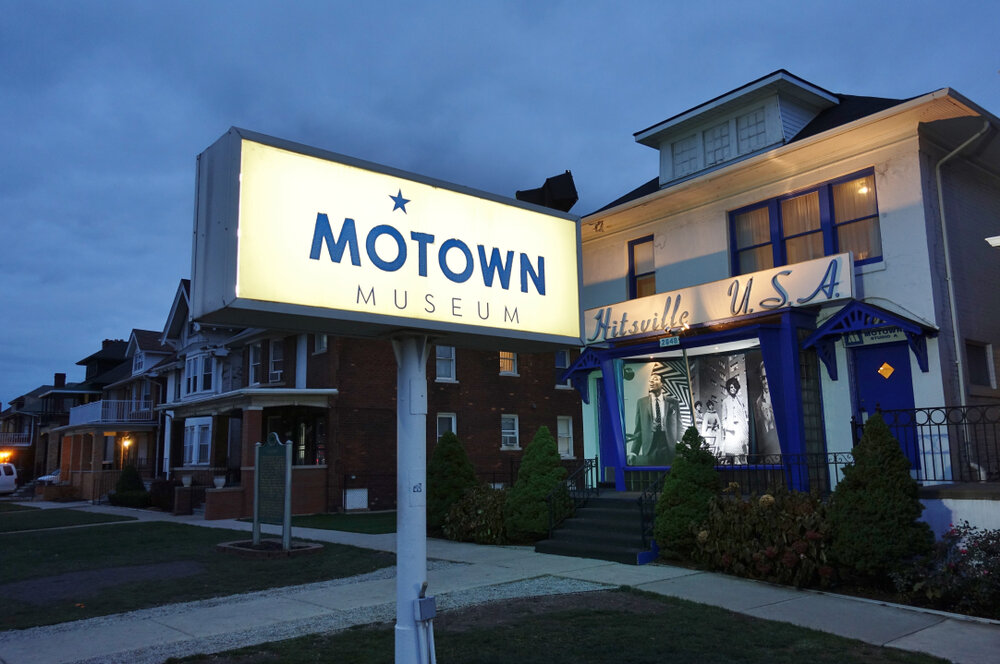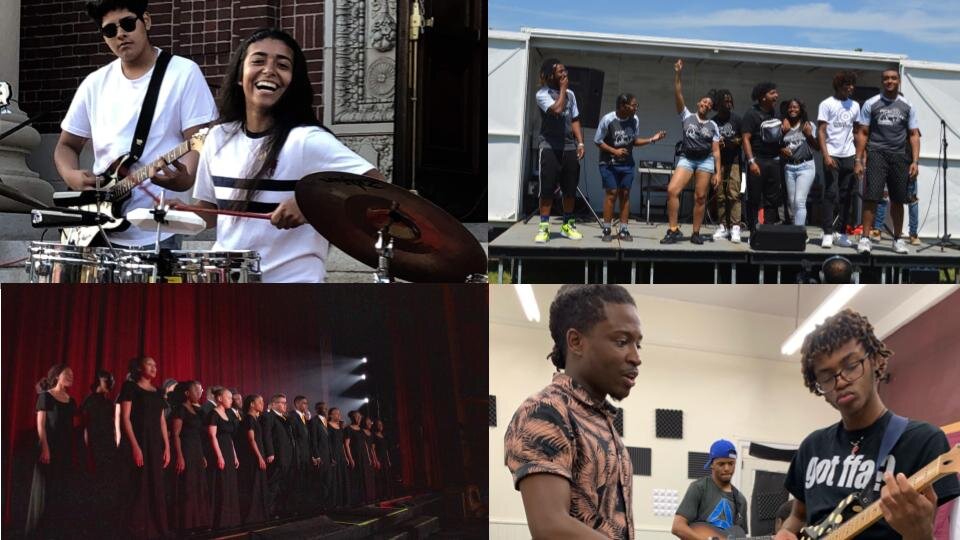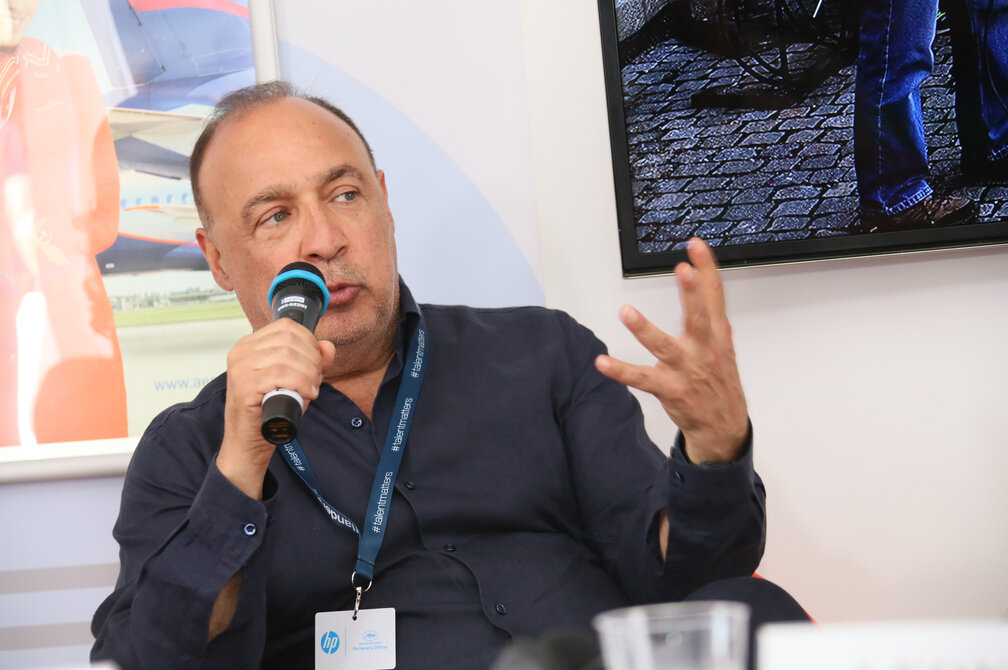Millions for Motown: Why Donors are Embracing Detroit’s Rich Musical Legacy
/EQRoy/shutterstock
In 1959, former auto worker Berry Gordy started his music label, Motown Records, in a nondescript building in his hometown of Detroit with $800 and the dream of making music for “all people.” He succeeded far beyond his wildest expectations.
The label, whose roster featured Marvin Gaye, Michael Jackson, The Temptations, The Supremes, Stevie Wonder and Diana Ross, went on to sell hundreds of millions of records worldwide. From 1960 to 1969, Motown was the country’s biggest black-owned company, propelling 79 records into the top 10 of the Billboard Hot 100.
Even more importantly, the music helped to break down racial barriers during the turbulent ’60s. “I wanted songs for the whites, blacks, the Jews, Gentiles, the cops and the robbers,” Gordy said. Gordy moved the label to Los Angeles in 1967 and sold his ownership of Motown to MCA for $61 million in 1988.
Sixty years after Gordy purchased the property that would become Motown’s Hitsville U.S.A. studio, the Motown Records story has embarked on a new and exciting chapter. In early September, Berry announced a $4 million gift to the Motown Museum’s expansion campaign. The money will fund a $50 million, 50,000-square-foot complex at the Hitsville, U.S.A., site on West Grand Boulevard, home of Motown’s original headquarters. Gordy’s gift is the largest single commitment for the museum’s project thus far.
“I'm excited about the future of Motown Museum and happy to support it,” said Gordy. “Not only will the expanded museum entertain and tell the stories of talented and creative people who succeeded against all odds, but it will also inspire and create opportunity for people to explore their dreams the way I did mine. I couldn’t be prouder to be a part of that.”
Gordy has also earned millions through real estate. His four-acre “Motown Mansion” and nearby parcel in Bel Air, dubbed by Variety as one of L.A.’s most “lavish unknown estates,” has been appraised at $50 million. His net worth stands at approximately $400 million. Gordy and his family do their grantmaking through the Berry Gordy Family Foundation, which supports causes in education, the arts and health.
Reasons for Optimism
Gordy’s late sister Esther Gordy Edwards revived the Hitsville building in 1985. Since then, the building has been the site of the Motown Museum, dedicated to the legacy of the record label, its artists and its music. In October of 2016, the museum announced a $50 million capital campaign to expand the museum by adding interactive exhibits, a theater, recording studios and a larger museum store. The proposed buildings would be spread over 10 city lots behind the Hitsville, U.S.A., house.
At the time, the Detroit News’ Michael Hodges wondered if Motown, “a relatively small institution that in 2014 had revenue of $2.35 million and a $1.76 million operating budget,” could raise $50 million quickly enough to get a massive construction project off the ground.
Proponents had reasons to be optimistic. First, Motown’s brand was ubiquitous yet, relatively speaking, under-leveraged. I mean, we’re talking about Motown here, which represented nothing less than the “sound of young America.” This is powerful stuff, especially for the museum’s target donor demographic—nostalgic baby boomers. “Music,” noted Juanita Moore, former president of Detroit’s Charles H. Wright Museum of African American History and Motown Museum supporter, “is far more marketable than history.”
Second, other Detroit-based nonprofit arts institutions had already set the bar by launching ambitious fundraising campaigns. The Michigan Opera Theatre, for example, announced a $50 million campaign in 2016. (As of early January, it was $20 million away from its goal.) Third, Motown Museum already had deep ties to local funders. Planners correctly anticipated these funders would get on board with the project.
Building a “Artistic and Entrepreneurial Hub”
The Detroit News’ Hodges alluded to a fourth reason that museum fundraisers should be bullish: Motown can pull from a broad, deep base of local and international musicians who rightfully view Motown as a cultural Mecca. For example, Hodges noted that in 2013, Paul McCartney paid an undisclosed amount to renovate the museum’s 1877 Steinway grand piano. And Motown’s mind-blowing roster of artists includes active philanthropists, including Diana Ross, Smokey Robinson and Stevie Wonder, who may feel inclined to support the institution that made them global stars.
Last but not least, planners have been quick to remind would-be donors that the expanded Motown Museum won’t be a “museum” in the conventional sense. For example, the museum’s “Hitsville Next” initiative aims to inspire future generations of creatives and entrepreneurs through workforce development training programs, classes and mentorships. And in April, the museum, in collaboration with Motown Records, launched the creation of the Motown Musician Accelerator and gBETA Musictech programs, both of which offer participants hands-on coaching and skill-building with music industry experts.
As we’ll see, this hybrid approach of mixing the arts with real-world job training skills resonated strongly with equity-minded donors looking to prepare kids for careers in an evolving creative economy. In fact, the institution might even drop “museum” from its name entirely, according to the Detroit Free Press, and rebrand itself as an “artistic and entrepreneurial hub.”
The museum’s expanded design, which will include “smart classrooms and music-making spaces,” will reflect this vision. “That has always been our No. 1 priority—to tackle the piece of the development that immediately serves our education programs and community outreach,” said Gordy’s grandniece and museum chairwoman Robin Terry. “It was important to our board that it be the very first thing we do to build on the programs that we’re already doing.”
Supporting Entrepreneurship
In September 2017, the Fred A. and Barbara M. Erb Family Foundation gave the museum $1 million to support the Education and Community Engagement space on the museum’s campus. John Erb, president and chair of the Erb Family Foundation, said in a press release that he hopes the gift will continue “the legacy of Motown Records’ entrepreneurship with students.”
In November 2018, the DTE Energy Foundation gave the Motown Museum a $500,000 grant to support the development of an education and community engagement space at the museum for young artists that will also house the museum’s summer camp programs. A month later, the museum announced grants from the Elaine & Leo Stern Foundation ($500,000), AARP ($225,000) and the Kresge Foundation ($1.3 million), the latter of which was earmarked for the development of a public plaza and renovation of three nearby buildings for education and community programs. Kresge also gave the museum $160,000 in 2016.
Kresge’s gifts align with its consistent place-based giving in Detroit. Last year, Kresge committed $50 million to Marygrove College to roll out a “cradle-to-career” educational model to revitalize surrounding areas. It was the largest-ever philanthropic investment in a Detroit neighborhood, according to officials at the time. The Motown Museum has also received support from William Pickard, chairman and founder of GAA Manufacturing and Supply Chain Management ($1 million), Lear Corp. ($750,000), and the Detroit Auto Dealers Association ($75,000).
Driving Urban Revitalization
The Motown Museum also integrates with the city’s plans to bring more tourists to Detroit and revitalize the city’s Woodward corridor. “A lot of cities are starting to understand how important culture is to bringing in tourists,” said Peter Allen, a lecturer with the University of Michigan’s Ross School of Business. “It's absolutely essential to (promote) uniquely Detroit music and culture, and there's no better example than Motown.”
Regional donors with an economic and emotional interest in revitalizing Detroit agree with Allen’s assessment. Back in 2016, when the museum announced its expansion plans, Jimmy Settles, head of the United Auto Workers (UAW)-Ford Department, which has been involved in the community surrounding the museum for years, said, “I was born near there and grew up just a few miles from the museum… the neighborhood looks nothing like the neighborhood did when I was a kid. My old house is abandoned.” To date, Ford Motor Co. and UAW-Ford have contributed $6 million to the museum.
A year later, Ethan Davidson, treasurer of the William Davidson Foundation, picked up on the theme of economic revitalization when his funder gave the museum a $2 million grant. With downtown Detroit humming, he said, “the resurgence of Detroit needs to move further away from the core and touch on more of the neighborhoods.” (Six months later, the foundation made a $15 million endowment gift to the Detroit Symphony Orchestra.)
“Telling the Story for the Future”
By November 2018, the Motown Museum had raised $16.5 million. A few months later, the museum received a $1.5 million grant from another big proponent of Detroit revitalization, the W.K. Kellogg Foundation, earmarked for community programming. The money will create new programs and expand existing ones like Motown Mic: The Spoken Word poetry contest, the SPARK and IGNITE summer camps and the museum's singing competition, Amplify.
La June Montgomery Tabron, CEO of the foundation, said, “Young Detroiters will be inspired by Motown’s story of creativity and begin to build in that spirit. All of us who grew up in Detroit know Motown’s music, but the story of innovation and enterprise is a source of inspiration for young people, as well.”
All of which brings me back to the man behind the music.
A common theme in philanthropy finds donors making a “transformational” gift after years of smaller gifts. The same can be said for Gordy, who became increasingly involved with the museum in recent years, deeding several nearby properties to the institution and donating money and items to museum exhibits. Gordy, said, Terry, has “come to see how the birthplace (of Motown) is at the heart of telling the story for the future. And so it’s very important to him.”
In late September, a couple of weeks after Gordy made his $4 million gift, the Motown Museum broke ground on the first of four phases of its $50 million expansion. Gordy was there, along with U.S. Senator Debbie Stabenow, the Rev. Jesse Jackson and Michigan Governor Gretchen Whitmer, who said the expanded museum will solidify Motown as a “world-class tourist destination.”
With UAW-Ford’s Settles, the Kellogg Foundation’s Faye Nelson and the Davidson Foundation’s Ethan Daniel Davidson in attendance, chairwoman Terry announced the museum’s fundraising campaign had crossed the $25 million threshold.
Gordy then addressed the crowd. “Not only will this expanded museum entertain and tell the stories of talented and creative people who succeeded against all odds,” he said, “but it will inspire and create opportunity for the young people to go after their dreams and continue to make this world better and better, and go after the things that seem impossible.”







































